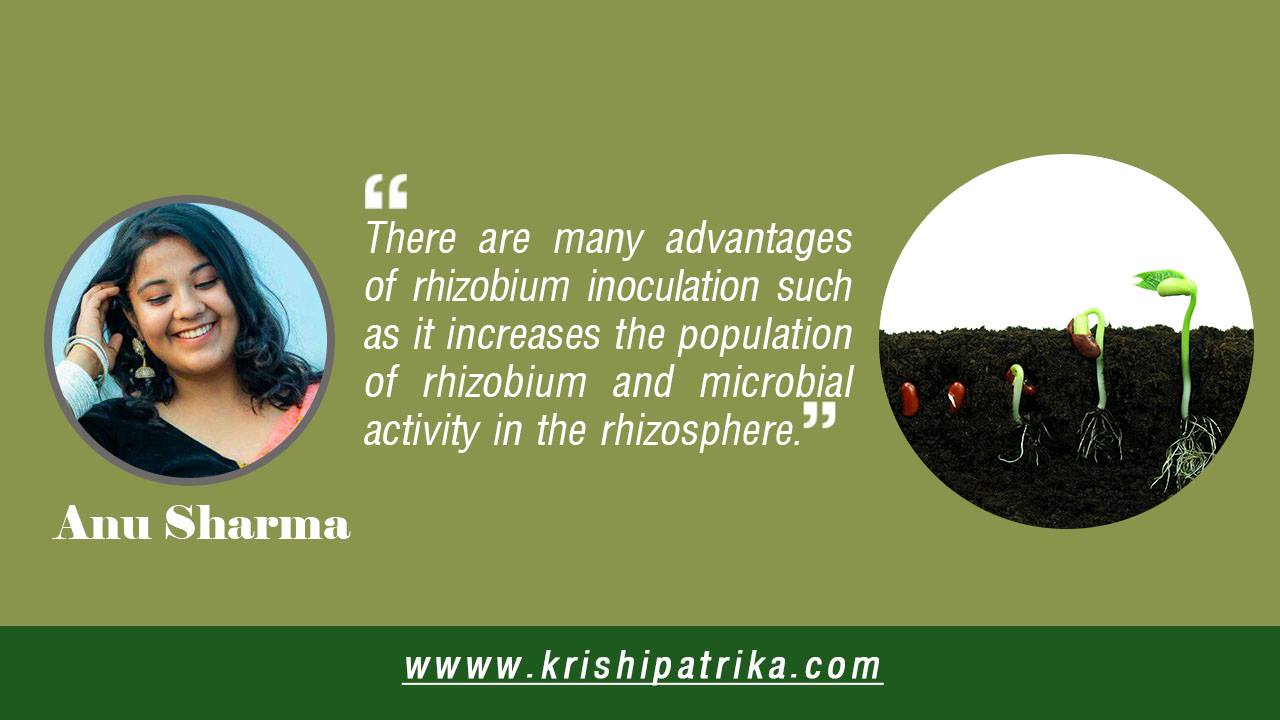
The life of every crop starts with a seed. Seed is a fertilized mature ovule that possesses an embryonic plant, stored food material (endosperm) & a protective coat (testa), which is viable and has the capacity to germinate. Small but powerful, it has the ability to feed the world. But the productivity has been decreased and overpopulation is even more creating problems for food sufficient. In aiming to produce enough food for the ever-increasing population, scientists have found a way to produce more food as well as secure the yield. Technological development in science has improved the seed properties, making it more resistant to pests and more capable of absorbing nutrients from the soil. Seed inoculation is one of the techniques to enhance the yield.
Seed inoculation is the coating of seed with culture of inoculums before sowing. There are different formulations of inoculants are available which are given below:
- Powder inoculants: This formulation is most popularly used in the world for seed coating. It is prepared on soil medium rich in organic matter (peat ,humus). It can be stored for 6 months under cool and shade conditions(below 40’c).
- Liquid inoculants: It is used for coating seed and not popular due to transportation and storage problem.
- Granular inoculants: It is prepared by mixing in inert medium like sand and it is mostly soil applied.
Seed of grain legume is inoculated with root nodule forming bacteria under Rhizobiaceae family.Rhizobium bacteria is host specific in grain legumes.
Rhizobium Grain
Species legumes
Rhizobium leguminosarrum – lentil,pea
Rhizobium phaseoli – Phaseolus
spp.(bean)
Rhizobium teifoli Fenukgreek
(Trigonella spp.)
BradyrhizobiumTaponicum – Soyabean
Brady rhizobium spp. – Chickpea
The materials required for rhizobium inoculation are crystalline sugar or jaggery, host specific rhizobium species. The steps for rhizobium inoculation is given below:
- Suitable formulations are selected i.e. powder form & host specific rhizobium species.
- 10% sugar medium is prepared by heating 50 g sugar or jaggery per litre water for 15 minutes.
- Sugar medium is cool for few minutes in shady places.
- Rhizobium inoculants is mixed(0.5-1.5kg/ha) thoroughly in cool sugar medium.
- Seed is mixed thoroughly in the inoculated sugar
- The inoculated stick on the seed coat due to sticky sugar medium.
- The inoculated seed is spread on cool shady place.
- The inoculated seed is sowed withi n 24 hrs under moist soil and cover immediately in order to protect rhizobium from sunlight.
After seed inoculation, care should be taken to immediately sow the seed or store it in a cool, dry place for only a short period of time. If stored for too long or in a temperature that is too warm, the Rhizobium can die. In addition, the Rhizobium in the seed coating may no longer be viable. The agrochemical should not be mixed after inoculation.
There are many advantages of rhizobium inoculation such as it increases the population of rhizobium and microbial activity in the rhizosphere.It increases the nodulation in root of grain legume crops.It increases atmospheric nitrogen fixation in root nodules and also increases the nitrogen content and fertility of soil. It increases the crop productivity by 39-40 percent. However the rhizobium inoculation is not suitable in every type of field especially in the field which is high fertile or nitrogen rich soil.It requires fallow and virgin land where cultivation not done before.It is suitable in field which is not cultivated for 30 years. It is applied in poor fertility soil because under poor fertility soil rhizobium population in the rhizosphere is not enough to assure nodulation in roots of plants.
Native Rhizobium bacteria in soil are not numerous or effective enough to stimulate biological nitrogen fixation and increase yields. To obtain the full benefit of biological nitrogen fixation, it is necessary to inoculate a crop with a compatible Rhizobia strain. Rhizobia inoculants have no negative side effects on seed because it is impossible to over-inoculate, therefore farmers don’t need to have additional knowledge to participate in this farm practice.
Inoculation is a fairly simple procedure, especially, due to the fact that the farmer himself can inoculate the seed prior to planting. It is a quick way to establish a good, healthy crop production with little money required and it is a great idea for higher yield. It can be best applicable for barren and poor fertile land and productivity can be increased significantly without any harmful effects to the environment.









